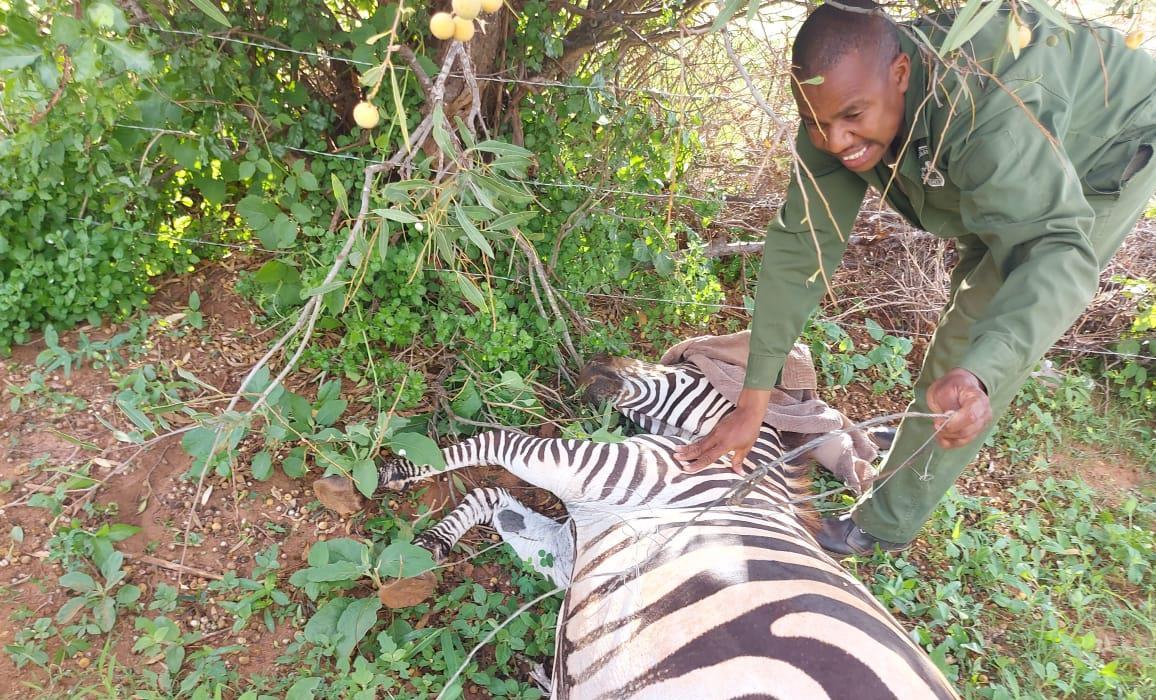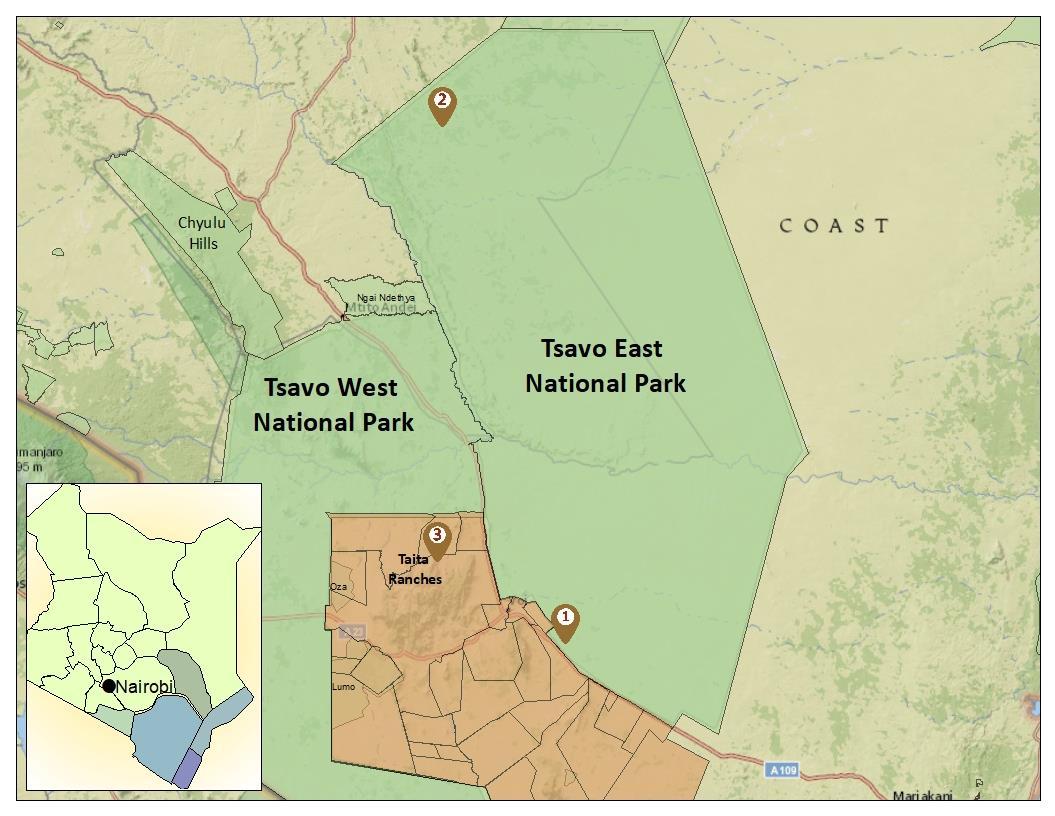SWT/KWS TSAVO MOBILE VETERINARY UNIT


DECEMBER 2022

3 Cases in December 1 Poaching Case 2 Elephant Cases

December Report by Dr. Campaign Limo
The Tsavo Conservation Area had good rains from November through to December. Tsavo therefore has adequate pasture and water for wildlife. Cases of downer elephants were encountered towards the end of November and at the beginning of December. The change of weather and forage during this transition period is thought to have triggered this syndrome. The Tsavo Mobile Veterinary Unit attended to 3 cases in December, these comprised 2 elephant cases and 1 snared zebra. One of these cases was a male orphan elephant called Oldope who fell ill shortly after graduating from the Nairobi Nursery to the Ithumba Rehabilitation Centre with his friends – Roho and Neshashi – at the end of November. Sadly, despite our best efforts to restore his health, he passed away on 07th December 2022.
Acknowledgement

The Tsavo Mobile Veterinary Unit would like to thank all stakeholders for their support. The Veterinary Unit is grateful for the on-going financial support received from Vier Pfoten through the Sheldrick Wildlife Trust and the technical support received from KWS management. May you all have a prosperous new year 2023

Case Details
Date Species Area Found Reason for Intervention Outcome 01-Dec 22 Elephant Tsavo East N.P. Natural Causes Adult female elephant seen recumbent and struggling to stand Successfully treated 04-Dec 22 Elephant Tsavo East N.P. Natural Causes Oldope, a young male elephant, fell ill 4 days after translocation from Nairobi to Ithumba Died 3 days later 12-Dec 22 Zebra Ndii Hills Snared Adult female zebra seen dragging a wire snare loosely hanging around the neck Successfully treated
Introduction
Case 1 – 01st December 2022
Elephant Natural Causes

Ndara Plains – Tsavo East National Park

This adult female elephant was spotted by the Rukinga Ranch pilot during a routine patrol
Examination and treatment
The elephant cow was found lying on its left side and struggling to stand It was exhausted, and it seemed that it had been recumbent for the last 24 hours. No observable injury was seen on close examination. 4 litres Dextrose and Ringers lactate solution were administered through a prominent ear vein to rehydrate the elephant and boost its energy levels. The elephant was then successfully assisted to rise, once it was on all fours, it walked towards a herd of elephants in the area.

Prognosis
The elephant has a fair prognosis. The ground team was requested to monitor the elephant and carry out extensive patrols to find similar cases requiring veterinary intervention.

Elephant Natural Causes Ithumba – Tsavo East National Park
Oldope, a young male elephant, had been translocated to the Ithumba stockades from the Nairobi Nursery a few days prior alongside his friends - Roho and Neshashi. He developed muscle rigidity and signs of spastic paralysis 4 days after arrival.




Examination and treatment
Oldope appeared weak, and he had difficulty breathing. He collapsed during examination due to muscle rigidity. He had signs of laryngeal paralysis, and anything he tried to swallow including water was vomited. The young bull appeared moderately dehydrated. No injury was detected, but muscle spasms were evident. Any sound or touch stimuli triggered violent spasms. Blood samples were collected, then Oldope was rehydrated with Ringer’s lactate and Dextrose to boost energy. Calcium borogluconate, anti-biotics, antiinflammatories and Catasol muscle tonic were also administered accordingly. Differential diagnosis considered included tetanus by Clostridium tetani, hypomagnesemia and possible plant poisoning.
Prognosis
Oldope was given a guarded to grave prognosis. Sadly, he passed away 3 days later despite our best efforts to restore his health.
2 – 04th December
Case
2022
Zebra Snared Ndii Hills
This adult female zebra was seen dragging a cable wire snare that was loosely hanging around the neck.
Immobilisation, examination and treatment
The snared zebra was found with a female zebra that had a foal. The trio were in a community area, and they were more used to seeing people around rather than vehicles. The snared zebra was therefore approached on foot and darted with 6 mg Etorphine hydrochloride and 60 mg Azaperone. The drug took full effect 8 minutes later. Examination revealed that the wire snare had not inflicted any injuries on the zebra’s neck. Anti-biotics were administered parenterally once the snare was removed then anaesthesia was reversed with 60 mg Naltrexone and 12 mg Diprenorphine hydrochloride. The zebra was on all fours 1 minute post reversal and re-joined the two zebras that were waiting nearby.

Prognosis
The zebra has a good prognosis.
Case 3 – 12th December 2022

















